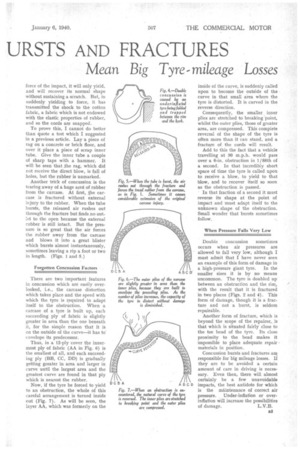The Search for an Indigenous Fuel
Page 29

If you've noticed an error in this article please click here to report it so we can fix it.
The Efforts of the Fuel Research Board Should be Directed to Other Sources of Supply
ALARGE part of 'the Report of the Fuel Research Board for the year ended March 31, 1938, is concerned purely with coal resources, examination, treatment, etc., but a certain amount of space is devoted to the production of oil from coal.
The study of the treatment of tar has been confined mainly to the investigation of the hydrogenation process. When the work was begun, its chief object was the determination of the best conditions for the production of motor spirit from low-temperature tar. As the work progressed, the scope was gradually widened, and the chief object now is the application of hydrogenation technique to the examination of (I) the behaviour of various tars, (2) the possibility of preparing products other than motor spirit, such as oil fuel or lubricants, (3) the treatment of pure compounds with a view to elucidating the nature of the reactions that occur during the hydrogenation of complex carbonaceous materials. In addition, it is observed that the application of hydrogenation to special purposes, such as the refining and desulphurization of oils, shall be studied from time to time.
Hydrogenation of Tar.
Tars in general Must be hydrogenated in two stages. In the first, there is a liquid-phase treatment in the presence of a finely dispersed catalyst to effect the conversion of asphaltic material to oil. Selected fractions resulting are then further hydrogenated over a fixed catalyst to yield the desired product.
The low-quality oil fuels obtained from Kimmeridge shale tar and lowtemperature tar by direct distillation are unsuitable for use as fuels in the high-speed oil engine, but by a hydrogenation treatment the tars gave fuel oils of varying quality, shale and cannel tar proving to be the better. • Tests have been conducted with various catalysts, and pelleted molybdenum disulphide was found to be the most effective. Investigation of the cracking of hydrogenated oils has been continued. Oils having lubricating properties may be prepared by the polymerization of olefines, and the primary object is to provide a source of unsaturated hydrocarbons. The results obtained have been promising.
By hydrogenation, shale tar or oil has been converted to an almost completely hydrocarbon product amounting to 88 per cent, by weight of the tar, containing about 57 per cent, boiling below 300 degrees C., and with -the remarkably small sulphur content of .03 per cent.
Until recently it was not thought possible to obtain Diesel oils from tar and coal oils, as all attempts prod aced oils having the aromatic and naphthenic character, but in view of the success obtained with hydrogenation, the situation concerning the production of such fuels from tar has been re-examined: The results demonstrate the possibility of rendering oils of poor quality suitable for use in Diesel engines by the addition of a small quantity of dope.
The catalytic synthesis of hydrocarbons from mixtures of carbon monoxide and hydrogen at atmospheric pressure gives a• product almost entirely of straight-chain para.ffins and olefines from the simplest numbers of the series up to wax, melting, at over 100 degrees C. .Appropriate fractious of the primary product, may be used as motor spirit and oil fuel'.
To obtain lubricating oils from coal, it appears essential to break down the starting material to very simple molecules and to rebuild these to more complex structures, Lubricating oil produced by synthesis shows good characteristics in regard to its coke numbers, both before and after oxidation, its setting point and its flash point, whilst other properties are up to the average values for mineral oils.
The only point in which synthetic oil falls below standard is in the oxidation number, and attempts will be made to improve this property. Synthetic oil is encouraging as regards oiliness, and the data already obtained support the view that satisfactory lubricating oils will ultimately be produced synthetically.
Research Too Limited.
We are rather surprised that more has not been done in the, direction of investigations into the development of other sources of fuel for motor vehicles. The Report seems to be confined to products derived from coal, whereas it seems essential to us that some study should be devoted to the matter of obtaining suitable fuels, such as alcohol, from vegetable matter, whilst research into the enriching of gas for use in internal-combustion engines and the possibilities of further developing suction-gas producers, would appear to be matters of urgent national importance,












































































